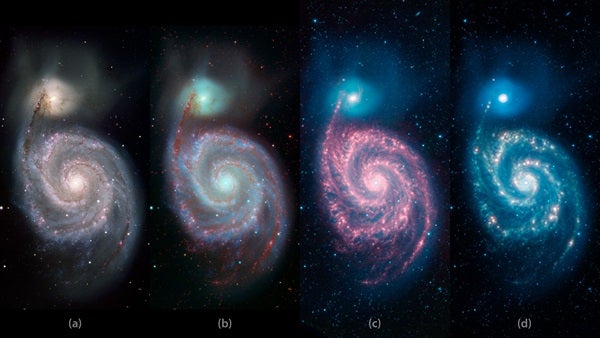On the left is the Whirlpool galaxy as it appears in optical light through a powerful telescope. The image comes from the Kitt Peak National Observatory 2.1-meter telescope. Moving right, the second image shows Kitt Peak’s two visible light wavelengths of blue and green, and NASA’s Spitzer Space Telescope enhances this photo even more by adding the infrared data it collects in red. Most noticeable should be how the dark areas, which are where dust blocks visible light, are less prominent in infrared, allowing astronomers to see past them.
Coming up to the third panel, the blues, greens, and reds are now the colors of three different infrared wavelengths. The blue haze represents the brightest spots (stars) and the red shows the carbon dust, lit by the stars in the galaxy.
The final photo on the right adds one more the infrared wavelength, now highlighting the areas where the galaxy’s dust is hot. The spots in the photo, which appear as reddish-white orbs, are where new stars are forming.










